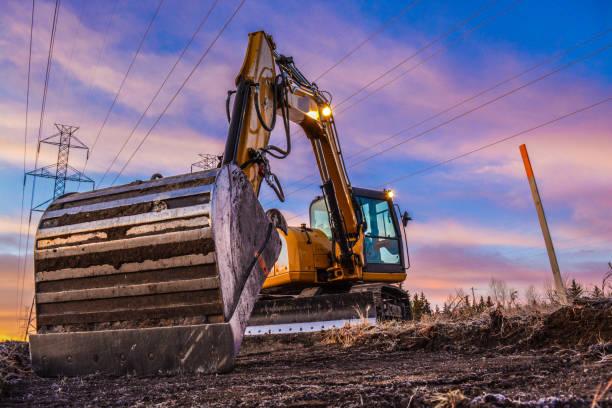Compact Electric Construction Equipment Market Paving the Way for Sustainable and Cost-Effective Construction Practices

The compact electric construction equipment market is poised for significant growth as industries and governments globally focus on sustainability, efficiency, and reducing carbon emissions. With the rise of electric mobility and the ongoing push toward green construction practices, compact electric construction equipment (CECE) is becoming an integral part of the evolving construction landscape. This article explores the long-term outlook for the market, examining key drivers, challenges, and the potential for innovation.
Current Market Landscape
The construction industry has traditionally been heavily reliant on diesel-powered machinery, such as mini excavators, skid steer loaders, and backhoe loaders. These machines have long been favored for their power, durability, and versatility. However, increasing environmental concerns, stricter emissions regulations, and advancements in battery technology have created a fertile ground for the adoption of electric alternatives. Compact electric construction equipment represents a shift toward a more sustainable future for construction operations.
The market for compact electric construction equipment includes small-scale electric versions of traditional machines that offer reduced emissions, quieter operation, and lower maintenance costs. These machines are particularly suitable for urban environments, where noise pollution and air quality regulations are more stringent. Electric models also provide long-term cost savings for businesses, primarily through lower fuel and maintenance costs, while offering greater versatility and ease of use.
Key Drivers of Market Growth
-
Environmental Regulations and Sustainability Goals: Governments around the world are setting ambitious sustainability targets and enacting policies to reduce greenhouse gas emissions. The European Union, for example, aims to reduce carbon emissions by 55% by 2030 and reach net-zero emissions by 2050. In response to these regulations, construction companies are increasingly adopting electric equipment to comply with emission standards and to contribute to environmental preservation.
-
Advancements in Battery Technology: One of the biggest barriers to widespread adoption of electric construction equipment has been battery performance. However, rapid advancements in lithium-ion batteries and energy storage technology have improved both the range and performance of electric machines. As battery costs continue to fall and energy density improves, electric machines can now offer the same levels of productivity and endurance as their diesel-powered counterparts.
-
Cost Efficiency: Over the long term, electric compact construction equipment can deliver significant cost savings. Although electric machines may have a higher upfront purchase price, they typically require less maintenance, lower fuel costs, and longer lifespan, which significantly reduce the total cost of ownership (TCO). The economics of owning electric machinery are improving as battery prices continue to decrease and energy costs for charging remain more stable than fluctuating fuel prices.
-
Demand for Cleaner Urban Development: As cities continue to grow, the demand for cleaner, more sustainable construction methods increases. Compact electric construction equipment offers a solution for construction activities in highly populated or environmentally sensitive areas, such as city centers or near residential zones. Their quieter operation and absence of exhaust emissions make them ideal for these contexts.
-
Technological Integration and Automation: Construction is becoming increasingly digital, and the integration of autonomous systems, telematics, and smart technology into electric construction equipment is gaining traction. These innovations enable improved efficiency, predictive maintenance, and remote monitoring, making electric machines even more attractive to contractors seeking to modernize their fleets.
Challenges to Overcome
Despite the positive outlook, several challenges remain for the widespread adoption of compact electric construction equipment:
-
Charging Infrastructure: While the availability of charging stations is expanding, especially in urban areas, the infrastructure to support electric machinery in construction sites, particularly remote ones, remains limited. Construction companies must invest in robust charging solutions, and governments must improve and expand the charging network.
-
High Initial Investment: Although long-term savings are a clear benefit, the initial capital expenditure required to purchase electric equipment can be a significant barrier for many construction companies, especially small- to mid-sized firms. Financial incentives, subsidies, or leasing options could help reduce this financial strain and accelerate the adoption of electric equipment.
-
Limited Range and Battery Life: While battery technology is improving, electric machines currently have limited operational hours compared to their diesel counterparts. For certain applications, especially those requiring extended work hours in harsh conditions, this can pose a challenge. Continued research into energy storage solutions is crucial for overcoming these limitations.
The Future Outlook
Looking ahead, the compact electric construction equipment market is expected to experience robust growth. A growing focus on sustainability and carbon-neutral construction practices, coupled with advancements in battery technology and electric drivetrains, will likely drive the demand for electric machines. Furthermore, as the global push toward decarbonization strengthens, electric equipment will become an increasingly common sight on construction sites.
The next decade could see a significant shift in the industry, with electric compact machinery becoming a mainstream option. By 2030, the market for electric construction equipment could surpass billions in revenue, spurred by the transition of fleets to greener alternatives. Additionally, as the technology matures and more manufacturers enter the market, it is expected that the variety of electric compact machines available will increase, catering to a broader range of construction applications.
Conclusion
The compact electric construction equipment market presents a compelling long-term opportunity, driven by environmental regulations, technological advancements, and the quest for cost savings. While there are challenges to overcome, the market is on a steady path toward widespread adoption. As the construction industry continues to embrace sustainability, electric machines will play a pivotal role in shaping the future of construction. The transition to electric will not only improve the environmental footprint of the industry but also offer contractors a more efficient and cost-effective approach to modern construction.
- Art
- Causes
- Crafts
- Dance
- Drinks
- Film
- Fitness
- Food
- Games
- Gardening
- Health
- Home
- Literature
- Music
- Networking
- Other
- Party
- Religion
- Shopping
- Sports
- Theater
- Wellness


